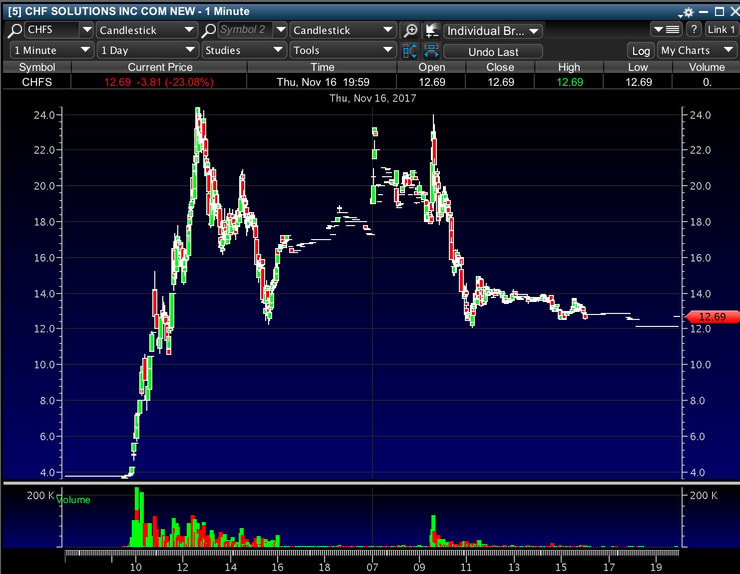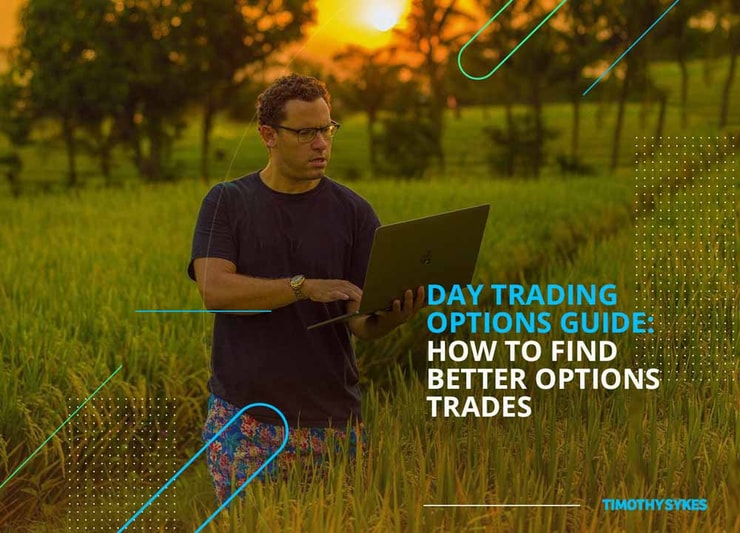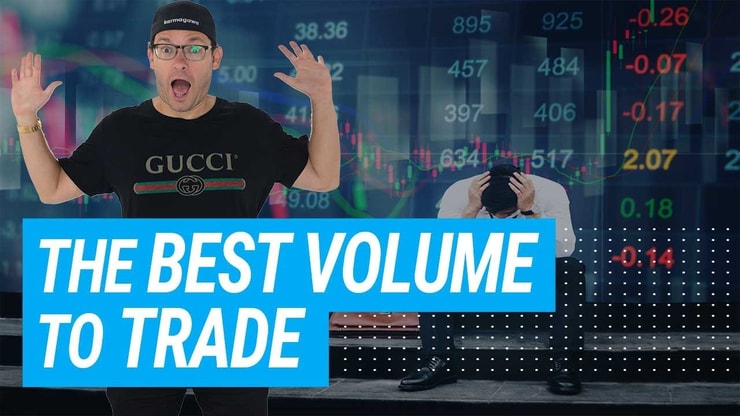In this post, you’ll learn the art of using day trading strategies for trading options, including how to approach the market, considerations to keep in mind, and how to find strong contenders for trades.
Traditionally, day trading and options trading have peacefully coexisted in separate planes.
But these days, that’s changing — as more and more traders are finding ways to trade options using tried-and-true day trading methodologies.
Options trading is appealing to traders because they typically require a lower initial investment, and often the ability to cut losses more easily. By combining the benefits of options trading with the quick pace and potential returns that day trading offers, you have many opportunities for potential profit.
In this post, you’ll learn the art of using day trading strategies for trading options, including how to approach the market, considerations to keep in mind, and how to find strong contenders for trades.
Table of Contents
What are Options?

2025 Millionaire Media, LLCOptions are a type of derivative. What’s a derivative? Let’s back up for a second to make sure that you understand that before we delve into options.
A derivative is a type of security that’s valued based on an underlying asset (or a group of underlying assets). Examples of the assets in question might be commodities, bonds, currencies, stocks, or market indexes.
Derivatives can either be traded like stocks, on an exchange or OTC (“over the counter”). Like stocks, their prices will fluctuate. But in this case, the fluctuation is based on the value of the underlying asset.
OK, so back to options. Options are a type of derivative because their price relies on the price of the underlying asset. It’s the type of asset that will make a derivative an option. This means that while options are a derivative, not all derivatives are options. Got it?
What is an Options Contract?
Options are bought as contracts. These contracts basically give you as the buyer the opportunity to call dibs on an asset.
They’re an agreement where you have the opportunity to buy or sell an asset at an agreed upon price, either on or before a specific and predetermined date. While you have permission to buy or sell within a finite period, you aren’t obligated to pull the trigger.
The fact that the execution isn’t mandatory differentiates options from another financial security which you may know: futures.
In the case of futures, you once again have dibs on the asset, but you’re obligated to buy or sell if certain criteria are met within the agreed upon timeframe.
Options are pretty much what they sound like in that you have the option to buy or sell, but you also have the ability to decline.
Are Day Trading Strategies Suitable for Options?

2025 Millionaire Media, LLCTraders with small accounts looking for alternate methods of getting in on the action of day trading while also mitigating risk sometimes trade options using day trading strategies.
Applying day trading technique techniques to options trading actually makes a lot of sense. In particular, it provides opportunities if you have a small account. Day trading options allows you to get in on the action of day trading while also mitigating risk and protecting your capital.
Here are some of the reasons why trading options is well suited to day traders:
- Low cost: It’s typically a low-cost investment strategy. Options usually cost less than an outright purchase of the underlying asset by itself. Instead of buying or selling the shares of a stock, for instance, you can buy the option and maintain control over a comparable amount of shares.
- Ease of entry/exit: With options, you often have the ability to get in and out of positions quickly and easily than with stocks, bonds, and mutual funds.
- Less risk: Because options contracts give you the ability to opt to buy in/out or not, they can be less risky than other types of day trading investments.
Types of Options

2025 Millionaire Media, LLCBefore we delve into applying day trading strategies to trading options, it’s important to gain a better understanding of how options work.
To educate you on the basics, let’s discuss the two key types of options: call options and put options. Here’s what they are:
More Breaking News
- Discover Financial Services’ Unexpected Leap: What’s Behind It?
- SNAP Shares Plummet: Time to Cut Losses?
- HTZ Faces Data Breach and Restructuring Woes
Call Option
The call option is kind of the prospector’s choice. It’s a potential investment for the future.
Here’s an example. Say you want to purchase an asset for $50,000 at some point in the future … but only if it meets certain criteria.
If you believe it could happen, you can purchase a call option for this asset. This means that you can lock in a price now, and if it meets your criteria within a predetermined period of time, you have the ability to buy.
Sounds awesome, right? But wait: it’s not totally without risk or consideration. The owner/seller of the asset in question doesn’t just want to give you the option to buy without a little collateral in return.
Typically, the option buyer is asked to put down a deposit or a premium. This is a portion of the total buy.
As the buyer, you stand to benefit because if the asset goes up in value (which is your hope), you can buy at the agreed upon price, which might become extremely advantageous within the window of time you’ve agreed upon.
However, if the expiration date of the option comes up and you decide that you don’t want to move forward, you won’t receive a refund on that initial payment.
Put Option
If the call option is for prospectors, the put option is for those who want to hedge their bets.
A put option is a contract where you have the right to sell the asset in question at some point in the future within a predetermined period of time if certain conditions are met.
With a put option, you set what is called a strike price. Say that you set the strike price at $10 per share. With your put option, you can call in your option to sell at that price at any point up until the expiration date of the option.
The benefit here is that even if the value of the stock goes down, you can still fetch the agreed-upon price within the predetermined time period. If the stock price goes below the strike price, you can profit from this style of trading. When the expiration date hits, you can either sell the option or cash in.
Of course, like a call option, it isn’t all benefit with zero risk. As a put seller, you receive a premium or down payment.
A single put option represents a certain amount of the asset in question. Often, it’s one per 100 shares of the asset, so the down payment would be 1/100th of the total purchase.
How to Find Good Options Trades

2025 Millionaire Media, LLCOK, now you understand the basic types of options and how they work. If you’re interested in pursuing them, how can you find good potential options trades?
Here are some techniques for your arsenal and things to consider when choosing options:
Technical Analysis
Technical analysis can help you determine a stock’s movement in terms of how much it’s moving, in what direction, and how long it’s been going on.
Technical analysis is vital for narrowing down your choices for stocks to trade. Day traders already know this.
But it’s also an invaluable way of determining and identifying desirable options trades, too. Actually, since there’s a finite time period assigned to the options contract, you can use targeted technical analysis indicators to narrow down your choices.
Here are a few of the indicators that you can use to find options:
- Bollinger bands: It might sound like an indie rock term, but this is actually a measure of volatility.
With this indicator, bands expand with greater volatility and shrink with less volatility. If a price is closer to the upper band, it could be overbought, and on the flip side, if the price is close to the lower band, it may be oversold.
- IMI: Short for intraday momentum index, this indicator can help you look at options from an intraday point of view.
- MFI: Short for money flow index and also known as volume-weighted RSI (see below) this is an indicator that shows you price and volume data at once. It keeps track of the flow of money into a security, both in and out, over a period of time.
- OI: No, not in a punk rock way. Short for open interest, this indicator shows you the open options contracts. Looking at this indicator can help you begin to identify or confirm trends in options.
- PCR: Short for put-call ratio, this indicator shows you the volume of put options versus call options. It can show you the overall market mood when it comes to options.
- RSI: Short for relative strength index, the RSI is an indicator that allows you to compare gains and losses over a period of time. This can help you see the price movements to see if options are being overbought or oversold.
Charts & Patterns

As a penny stock trader , I rely on charts and patterns to tell me a bigger story about whether or not a stock is a good pick. I consider this a huge part of my success as a day trader and it’s one of the biggest things I emphasize to my Trading Challenge students.*
If you want to employ day trading strategies to options trading, making use of charts and patterns can prove immensely helpful.
Timing
Timing is key when it comes to trading. This is particularly true with day trading, where the pace is fast.
Personally, I’m a big advocate of waking up early, well before the stock market opens, so that you can do your research well before the market is in full swing.
This will give you a greater chance of recognizing opportunities as a trader. After all, a lot of the action happens right when the market opens, so you want to be prepared.
You can review what’s been going on in the market overnight, and see what’s going on in the foreign markets. You can check indicators, and look at charts to see if you can identify any trends.
If you ask me, one of the biggest keys to success in any trade is doing your research. This will not only help you make better choices about options to trade, but it will help you prepare a stronger trading plan which includes a well-timed entry and exit.
Stop Orders
A stop order is an order type where you specify that you want to buy or sell a stock only when it reaches a specific price.
This is called the stop price, and when it’s been reached, the order is executed as a market order.
A buy stop order is when you enter the trade at a stop price exceeding the current market price, where a sell stop order is when you enter the trade at a stop price below the current market price.
You can set up a stop order with options. This means that if the price reaches your specified price, the options order is executed at the market price. The idea is that you can potentially limit losses and control the trade a bit.
However, it can also limit gains. The thing is, the stock market is ever-fluctuating. So there could be a temporary event that has an effect on the price and causes your order to execute.
Even if your investment is doing well, this could be a quick pull trigger that keeps you from maximizing potential profits.
If you’re interested in stop orders while trading options, be sure to discuss your options (no pun intended) with your broker. The choices for stop orders with options may be different from those when you’re just buying stocks.
Benefits of Day Trading Options
There are several benefits of including options trading in your repertoire as a day trader.
For one, options are a natural progression from futures, which day traders commonly trade.
Options have a lot in common with futures. They often have the same underlying assets and have pretty similar structures, so adding options to the mix will feel familiar in many ways.
However, it’s important to remember that while they have many similarities, options are not futures and they cannot be treated identically.
Here are some of the specific benefits of day trading options:
Low-Cost Strategy
One of the biggest draws to day trading options is that it’s a low-cost strategy for trading. This is a great advantage, especially if you have a small account.
To buy an option is significantly less expensive than buying the underlying asset or the shares of a stock. This means that your entry into a trade is easy and has comparatively low impact on the wallet.
Since there’s an expiration date on the contract, you also know from the get-go that the exit is going to be easy: you’ll just have to make a decision about whether to execute or not by a certain date.
Diversity
Options are a great way to diversify your portfolio without venturing too far outside of your day trading comfort zone.
Since you can buy into an options contract for a cheaper amount than buying the actual stock, you have the potential to explore a number of different opportunities.
However, don’t go nuts, because remember: while you do have the option to execute or not, if you choose not to by the time that the contract expires, you’re still out the initial premium. These fees can add up over time if you’re not very careful about your choices.
Big Gains
Day trading options has the potential to net you big gains.
Because you’ve agreed on a specific price to buy or sell, if there’s a big movement in the stock’s price, there is potential for large profits.
Volatility can be an asset with day trading options and can help you earn profits if things go well.
Say, for instance, that your contract gives you the option to buy a stock at $10 per share. If the value of that stock goes up to $40, you’re in a position where you can make a massive gain because you locked in the lower price.
Key Tips for Day Trading Options

2025 Millionaire Media, LLCInterested in day trading options? Awesome. However, be sure to read through these tips before you get trading for the best results. After all, day trading options is different than day trading stocks!
Volume and Volatility
Volume and volatility are key things to look for when day trading options.
When day trading, you can look for even small fluctuations in stocks to gain profits. However, with day trading options, you need to look for a little more volatility.
Because options represent an underlying asset that is worth more, the more they move, the more you can stand to turn a profit.
The good news is that there’s generally more volatility inherent to options trading, because they represent stocks or assets that are more expensive than, say, penny stocks.
However, keep in mind that if you’re day trading options, your time is limited. This means it’s extra important to be vigilant, especially since options tend to have bigger bid-ask spreads.
In case you’re not familiar with the term bid-ask spread, here’s the lowdown. The bid is the current highest price that somebody’s willing to pay for a stock, and the ask is the current lowest price somebody’s willing to sell their stock.
The bigger bid-ask spreads can potentially lower your profits as a day trader.
Stay Focused
I probably don’t have to tell you this, but day trading moves fast. This means that it’s vital to remain on task and focused.
This is particularly true with options trading since there are so many things to consider and keep in mind when making this type of investment.
First, you have to make sure that you’ve been diligent in your research. Just because you’ll have the option to exercise your option or not doesn’t mean it’s without risk. If you decide not to, you’ll still be responsible for the initial buy-in.
Yes, you’d lose less than if you were to buy the stock or underlying asset outright. But this can add up over time, so it’s better to choose options that you really feel have a stronger potential to earn profits. The way to do this? Yep, research.
Stay focused. It’s important to closely monitor the charts and indicators because you want to be able to make your exit at the right time with an options contract.
Why Do You Need Expert Assistance?
Hindsight is often 20/20 in trading. I can’t say how many times I’ve heard traders say “If only I’d done this differently …”
To a certain degree, time will be your biggest teacher, cluing you in on the lessons about how to conduct yourself in trades and how to avoid losing money.
Of course, this is only if you’re very diligent about monitoring your progress in a trading journal and really evaluating what you’re doing that is working (and what’s not).
Unfortunately, many traders don’t have the time, means, or patience to stick with trading long enough to learn the ropes on their own.
If you want to have a quicker learning curve and sail through a lot of those common money-losing rookie mistakes, consider seeking out assistance from experienced traders.
Day trading classes can be worth their weight in gold in terms of bringing you up to speed on how the stock market works and how to conduct yourself in trades.
No, it won’t make you rich instantly, but it will definitely guide you through many of the lessons you’d probably have to learn the hard way.
Trading Challenge
My Trading Challenge offers a different type of trading education.
Learning the basics of the stock market is important. Learning key trading techniques is vital.
However, to really find success as a trader, you need to bridge the gap between education and action. My Trading Challenge helps my students do this.
I created the Challenge to help you easily learn the knowledge that I had to amass the hard way because there weren’t many trading resources out there when I was getting started.
But I also want to teach you how to put this knowledge to use. So in addition to a huge library of lessons, webinars, and blog posts, I also trade right along with my students, using a small account.
Ultimately, my Trading Challenge helps you learn skills that you can immediately put to work.
The Bottom Line
Day trading options can be a way to expand your trading repertoire, improve your level of diversity, and potentially gain profits.
Because trading options gives you a lot of flexibility, you can stand to profit while potentially minimizing risk since you aren’t obligated to exercise your option.
However, it’s not a trading method to be entered lightly because there are still risks and a learning curve involved. Be sure to educate yourself thoroughly before adding it to your regular trading routine.
Have you considered day trading options? I want to hear about your experience. Share your comments!










Leave a reply